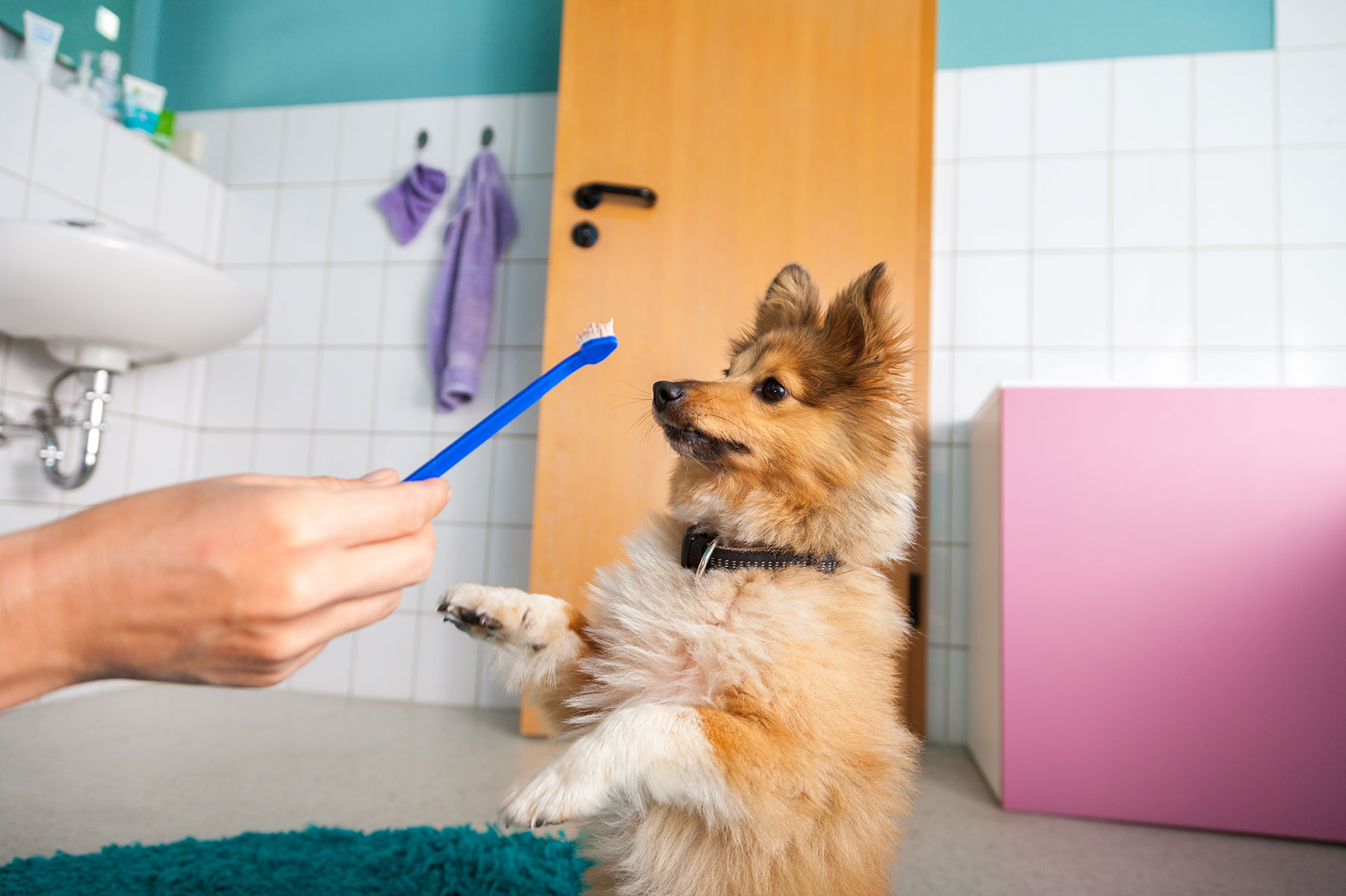
What is periodontal disease?
Periodontal disease is the inflammation of the gum and bone surrounding the teeth in a cat or dog’s mouth. It happens due to the build-up of plaque and tartare, which leads to inflammation and infection of the tooth, the surrounding bone, and the surrounding gum. Over time, this inflammation and infection causes the bone and gum to erode leaving the roots of the tooth exposed.
Left untreated, periodontal can lead to painful conditions such as abscess formation around the root of the tooth, and resorption of the tooth, which are conditions that can only be resolved with surgery.
How do I fix it?
The treatment for periodontal disease depends on the severity of the disease. For mild cases, it is possible to fix the teeth using a procedure known as a scale and polish. This is when a machine called an ultrasonic scaler is used to remove any build-up of plaque and tartare, and then the surface of the tooth is polished afterwards to remove any rough surfaces of the tooth that bacteria can get caught on.
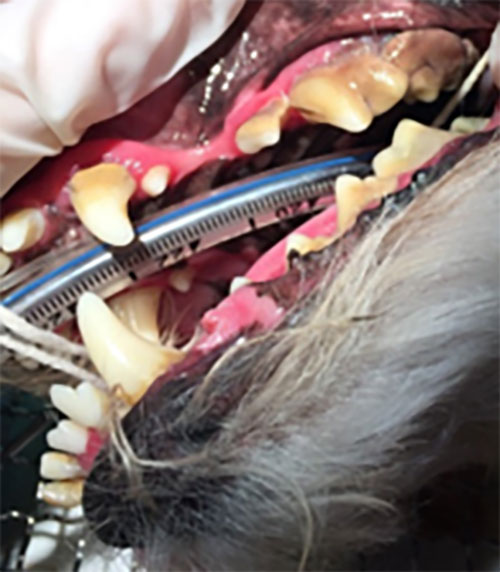
Dental disease often appears as discolouration or build up of the teeth, as well as inflammation or redness of the gums surrounding the teeth. You may also notice foul-smelling breath.
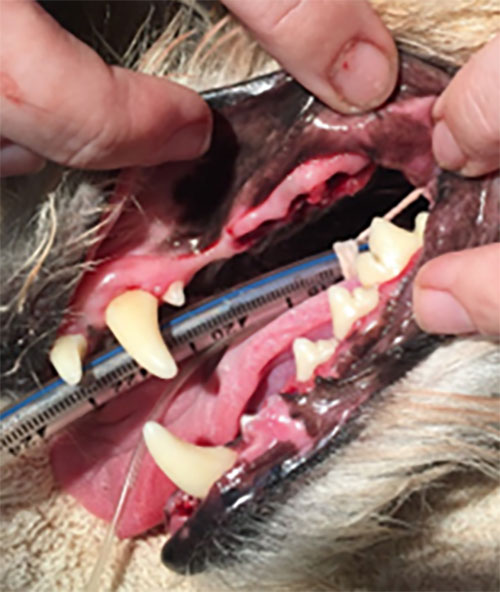
Extraction of any infected teeth and scale and polish of the remaining teeth is the treatment of choice for periodontal disease.
For advanced periodontal disease, the main treatment is the extraction of any severely diseased teeth, although there are other procedures that may be able to salvage a tooth, generally performed by a veterinary dentist. As the tooth usually acts as the source of infection, removal of the tooth allowed the gum and surrounding bone to heal. Any inflammation and infection will settle once the tooth is removed.
It is important to note that both these procedures must be done under a general anaesthetic as they can be quite painful and uncomfortable. Incredibly high levels of sedation are required to be able to remove a tooth or to perform a thorough scale and polish of the teeth and it is safer to perform a general anaesthetic in these cases than it is to heavily sedate an animal.
Periodontal is a very painful condition that can be easy to miss. Poor dental health leads to poor quality of life in dogs and cats, and so it is important to address any issues early. However, this is a condition that is easily treated with the consultation of your vet. Make sure to ring your vet today to enquire about your pet’s teeth!
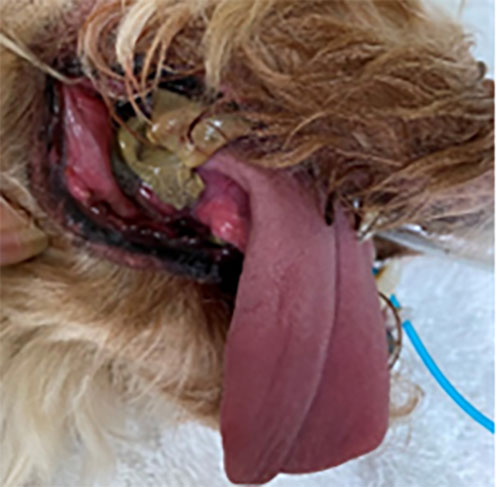
Inappetence, drooling, and other clinical signs are only present in very late-stage dental disease.
How do I know when my pet needs a dental procedure?
In general, any dental disease is visible if you look at your pet’s teeth. Things that might indicate it’s time for a vet visit are if you notice any significant build-up or discoloration of your pet’s tooth, any redness or inflammation of the gum surrounding your pet’s teeth or a foul smell coming from their mouth.
Unfortunately, cats and dogs don’t show many clinical signs of dental disease until the very end stages. Inappetence, pawing at the mouth, vocalising or drooling indicates very severe pain and would require immediate veterinary attention. In the earlier stages, it is still very likely that your pet’s mouth is sore even if they aren’t showing clinical signs, and early intervention before any signs of severe pain emerge is ideal.
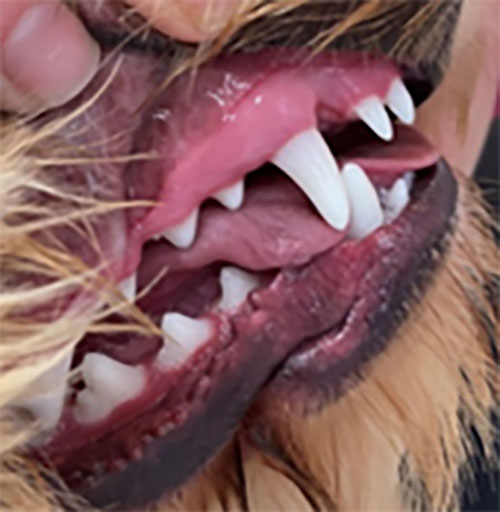
Healthy teeth should be clean and white. The gums should be a healthy shade of salmon pink with no accompanying redness.
What sort of things can I do to care for my pets’ teeth?
There are a multitude of products available on the market to help improve dental health in pets. However, it should be noted that there is no over the counter product that can guarantee your pet’s teeth stay health and disease-free for life. In humans, we brush our teeth twice daily and still require a 6 monthly scale and polish to keep our teeth healthy and even then we may still lose teeth when we get older- cats and dogs don’t generally brush their own teeth!
Some of techniques to maintain dental health are as follows:

Keep me smiling with healthy teeth!
- Tooth brushing- in general this is a very safe and non-invasive way to keep a dog or cat’s teeth healthy. It is important to use pet-safe products as human toothpaste is toxic to dogs and cats, but there are several over-the-counter toothpastes for dogs and cats than can be used to brush their teeth. However, while tooth brushing is good to maintain dental health, it cannot cure periodontal disease- once the gums become inflamed or infected, the only cure is a dental procedure under anaesthetic.
- Dental chews- these can be a great and tasty way to help maintain your dog’s teeth. There are several brands available on the market, however they are not sufficient as a sole form of dental care.
- Dental diets- there are several diets for cats and dogs available, such as Hill’s t/d or Royal Canin dental, that are designed to improve dental health.
- A yearly scale and polish- while there are several over the counter products that can help reduce tartare and plaque build-up on teeth, generally after a certain level of build-up the only way to remove it is via a scale and polish. A yearly preventative scale and polish might help keep your pet’s teeth healthy.

You have remarked very interesting points! ps decent website.Money from blog